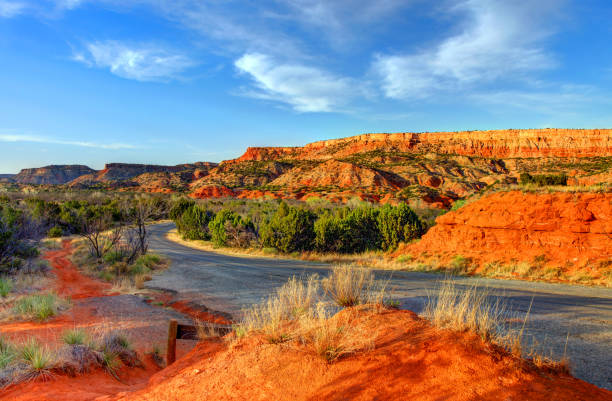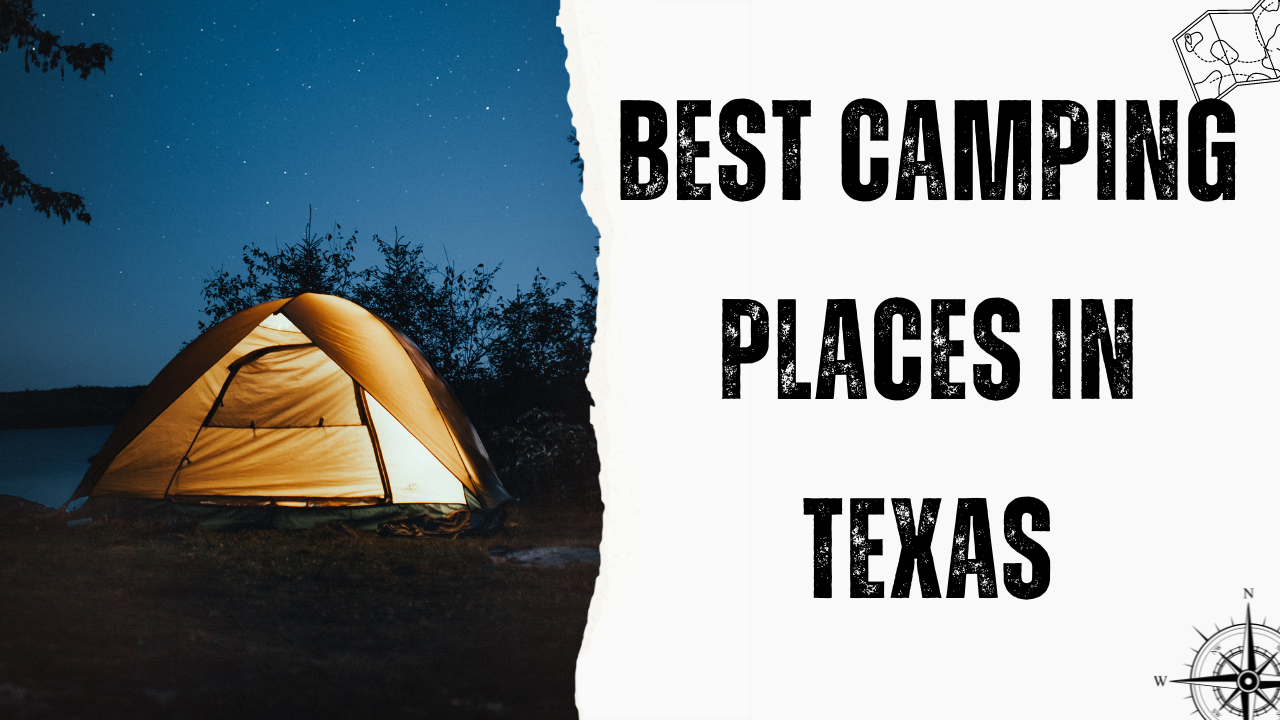Camping Places in Texas
Texas, the second-largest state in the United States, offers a diverse landscape that ranges from sprawling deserts to lush forests and everything in between. For outdoor enthusiasts and adventure seekers, the Lone Star State provides an array of camping opportunities that showcase its natural beauty and rich cultural heritage. In this comprehensive guide, we’ll explore the five best camping places in Texas, each offering unique experiences and breathtaking scenery that will leave you in awe of the state’s natural wonders.
1. Big Bend National Park
A Desert Oasis in West Texas
Nestled in the heart of West Texas, Big Bend National Park is a stunning testament to the raw beauty of the Chihuahuan Desert. This vast wilderness, encompassing over 800,000 acres, offers a diverse range of camping experiences that cater to both seasoned backpackers and casual car campers. The park’s rugged terrain, characterized by towering canyons, expansive desert landscapes, and the winding Rio Grande, provides a backdrop for unforgettable outdoor adventures.
Big Bend National Park offers three developed campgrounds: Rio Grande Village, Chisos Basin, and Cottonwood. Each campground has its unique charm and proximity to different park attractions. Rio Grande Village, situated along the banks of the Rio Grande, offers stunning views of the Sierra del Carmen mountains and easy access to hot springs.

Chisos Basin, nestled in the heart of the Chisos Mountains, provides a cooler retreat during hot summer months and serves as an excellent base for hiking the park’s most popular trails. Cottonwood, located in a scenic desert environment, offers a more secluded camping experience with opportunities for bird watching and stargazing.
For those seeking a more immersive wilderness experience, Big Bend also offers backcountry camping options. With proper permits, adventurous campers can explore the park’s remote areas, set up camp in designated backcountry sites, and truly disconnect from the outside world. The park’s diverse ecosystem supports a wide array of plant and animal life, including over 450 species of birds, making it a paradise for nature enthusiasts and wildlife photographers.
2. Guadalupe River State Park
A Hill Country Haven for Water Enthusiasts
Located in the heart of Texas Hill Country, Guadalupe River State Park offers a refreshing escape from the summer heat and a picturesque setting for year-round camping adventures. The park’s centerpiece is the crystal-clear Guadalupe River, which winds its way through limestone bluffs and cypress trees, creating a scenic playground for water enthusiasts and nature lovers alike.
The park offers over 85 campsites, including both water and electric sites, as well as walk-in tent sites for those seeking a more rustic experience. The campgrounds are well-maintained and provide easy access to the river and hiking trails. For larger groups or families, the park also offers a group campsite that can accommodate up to 40 people, making it an ideal destination for reunions or outdoor gatherings.

One of the main attractions of Guadalupe River State Park is the abundance of water activities available. Visitors can enjoy tubing, kayaking, and canoeing along the river’s gentle rapids, or simply relax on the sandy beaches and soak in the sun. The park also boasts over 13 miles of hiking and biking trails that wind through the rugged Hill Country terrain, offering stunning views of the river and surrounding landscape.
For nature enthusiasts, the park is home to a diverse array of wildlife, including white-tailed deer, raccoons, and various bird species. The clear night skies provide excellent opportunities for stargazing, and the park often hosts educational programs and guided nature walks that allow visitors to learn more about the local ecosystem and geology.
3. Palo Duro Canyon State Park
The Grand Canyon of Texas
Often referred to as the “Grand Canyon of Texas,” Palo Duro Canyon State Park is a geological marvel that offers a unique camping experience in the Texas Panhandle. The park boasts the second-largest canyon in the United States, stretching over 120 miles long and up to 20 miles wide, with depths reaching 800 feet.
The vibrant red rock formations, carved by the Prairie Dog Town Fork of the Red River over millions of years, create a stunning backdrop for outdoor adventures and provide a glimpse into the region’s rich geological history.
Palo Duro Canyon State Park offers a variety of camping options to suit different preferences and group sizes. The park features over 150 campsites, including sites with water and electricity, primitive sites, and even unique cabin accommodations. For those seeking a more secluded experience, the park also offers backcountry camping in designated areas, allowing visitors to immerse themselves in the rugged beauty of the canyon.

One of the highlights of camping at Palo Duro Canyon is the extensive network of hiking and biking trails that wind through the canyon floor and along its rim. The park boasts over 30 miles of trails, ranging from easy nature walks to challenging backcountry routes, offering something for every skill level. The iconic Lighthouse Trail leads to the park’s most recognizable rock formation, the Lighthouse, and provides breathtaking views of the surrounding canyon landscape.
In addition to hiking and biking, the park offers horseback riding tours, allowing visitors to explore the canyon in a unique and immersive way. During the summer months, the park hosts the outdoor musical drama “TEXAS,” which tells the story of the region’s settlers and pioneers against the backdrop of the canyon’s majestic rock formations.
4. Padre Island National Seashore
Coastal Camping Paradise
For those seeking a coastal camping experience, Padre Island National Seashore offers a unique opportunity to camp along the longest undeveloped barrier island in the world. Stretching for 70 miles along the Gulf of Mexico, this pristine coastline provides a haven for wildlife, including endangered sea turtles, and offers visitors a chance to experience the raw beauty of Texas’s coastal ecosystem.
Padre Island National Seashore offers several camping options, catering to different preferences and levels of adventure. The Malaquite Campground, located near the Visitor Center, provides semi-primitive camping with easy access to amenities and the beach. For those seeking a more immersive experience, the park allows primitive beach camping along most of its 60 miles of shoreline, subject to certain regulations and tides.
One of the main attractions of camping at Padre Island is the opportunity to witness sea turtle releases during nesting season. The park is home to the Kemp’s ridley sea turtle, the most endangered sea turtle species in the world, and visitors may have the chance to observe hatchling releases during the summer months. The park also offers excellent opportunities for birdwatching, with over 380 species of birds recorded within its boundaries.

Beachcombing, fishing, and windsurfing are popular activities along the shoreline, while the Laguna Madre on the western side of the island provides calm waters for kayaking and stand-up paddleboarding. The park’s remote location also makes it an ideal spot for stargazing, with minimal light pollution allowing for breathtaking views of the night sky.
5. Lost Maples State Natural Area
A Fall Foliage Wonderland
Tucked away in the heart of Texas Hill Country, Lost Maples State Natural Area is a hidden gem that offers a unique camping experience, especially during the fall season when its famous Bigtooth Maples burst into a spectacular display of autumn colors. This 2,174-acre park is known for its rugged canyons, clear streams, and diverse wildlife, providing a picturesque setting for outdoor enthusiasts and nature lovers.
Lost Maples offers both primitive and backcountry camping options, allowing visitors to immerse themselves in the park’s natural beauty. The primitive campsites are equipped with water and restrooms nearby, while the backcountry sites offer a more secluded experience for those willing to hike in with their gear. The park’s camping areas are strategically located to provide easy access to hiking trails and scenic viewpoints.
The park boasts over 10 miles of hiking trails that wind through the Sabinal River canyon and up to scenic overlooks, offering breathtaking views of the surrounding Hill Country landscape. The East Trail Loop is particularly popular during the fall season, as it takes hikers through groves of Bigtooth Maples that transform the area into a vibrant palette of reds, oranges, and yellows.

In addition to hiking, Lost Maples offers excellent opportunities for birdwatching, with over 200 species of birds recorded in the park. The clear waters of the Sabinal River and its tributary creeks provide habitat for native fish species and offer opportunities for fishing and wildlife viewing. During the fall and winter months, the park hosts guided hikes and educational programs that focus on the area’s unique ecology and geology.
FAQs (Frequently Asked Questions)
Q: When is the best time to camp in Texas?
A: The best time for camping in Texas largely depends on the region and personal preferences. Spring (March to May) and fall (September to November) generally offer mild temperatures and pleasant weather across the state. Summer can be hot, especially in desert areas, while winter camping is possible in many parts of Texas but may require additional preparation for colder temperatures.
Q: Do I need reservations for camping in Texas state parks?
A: While some campsites are available on a first-come, first-served basis, it’s highly recommended to make reservations, especially during peak seasons and weekends. Many popular campgrounds fill up quickly, and reservations can be made through the Texas Parks and Wildlife Department website or by phone.
Q: Are campfires allowed in Texas camping areas?
A: Campfire regulations vary depending on the specific park and current fire conditions. Many parks allow campfires in designated fire rings or grills, but restrictions may be in place during periods of high fire danger. Always check with the park officials for current fire regulations before starting a campfire.
Q: What wildlife might I encounter while camping in Texas?
A: Texas is home to a diverse array of wildlife, including white-tailed deer, raccoons, armadillos, various bird species, and in some areas, larger mammals like black bears or mountain lions. It’s important to practice proper food storage and follow park guidelines to minimize wildlife encounters and protect both yourself and the animals.
Q: Are pets allowed in Texas camping areas?
A: Many Texas state parks and campgrounds allow pets, but regulations may vary. Pets are typically required to be on a leash and under control at all times. Some areas may have restrictions on pets in certain buildings or on specific trails. Always check the park’s pet policies before bringing your furry companion.
Q: What should I pack for a camping trip in Texas?
A: Essential items for a Texas camping trip include appropriate clothing for the season, sturdy hiking boots, sun protection, insect repellent, plenty of water, and basic camping gear such as a tent, sleeping bag, and cooking equipment. It’s also advisable to bring a first aid kit and familiarize yourself with the specific requirements of your chosen camping destination.
Q: Are there any unique camping experiences available in Texas?
A: Texas offers several unique camping experiences, including beach camping along the Gulf Coast, desert camping in Big Bend National Park, and even glamping options in some private campgrounds. Some parks also offer special programs like stargazing events or guided wildlife tours that can enhance your camping experience.
Q: How can I practice responsible camping in Texas?
A: Responsible camping involves following Leave No Trace principles, which include packing out all trash, respecting wildlife, staying on designated trails, and minimizing campfire impacts. It’s also important to be aware of and follow specific park regulations, respect other campers, and be prepared for the conditions you may encounter.
Final Words
Texas offers a wealth of camping opportunities that showcase the state’s diverse landscapes and natural wonders. From the rugged canyons of Big Bend and Palo Duro to the serene waters of Guadalupe River and the coastal beauty of Padre Island, each of these five best camping places in Texas provides a unique outdoor experience that will leave visitors with lasting memories. Whether you’re seeking adventure, relaxation, or a chance to connect with nature, the Lone Star State’s camping destinations offer something for everyone.
By respecting the environment, following park regulations, and embracing the spirit of outdoor exploration, campers can fully appreciate the beauty and wonder of Texas’s natural landscapes while creating unforgettable experiences in the great outdoors.











